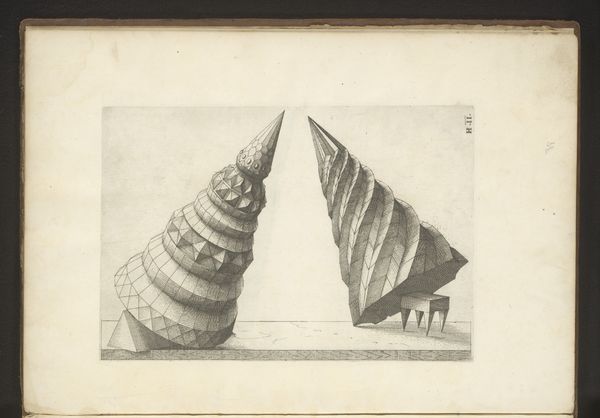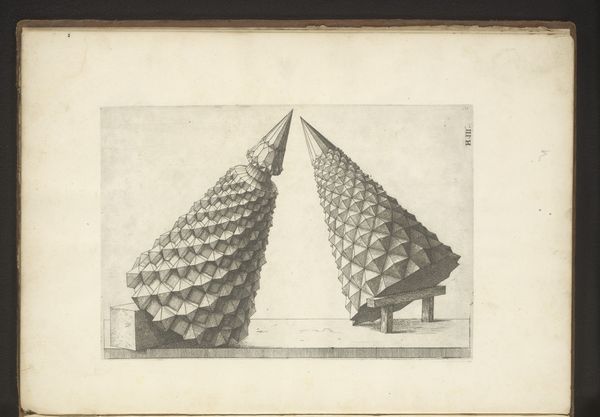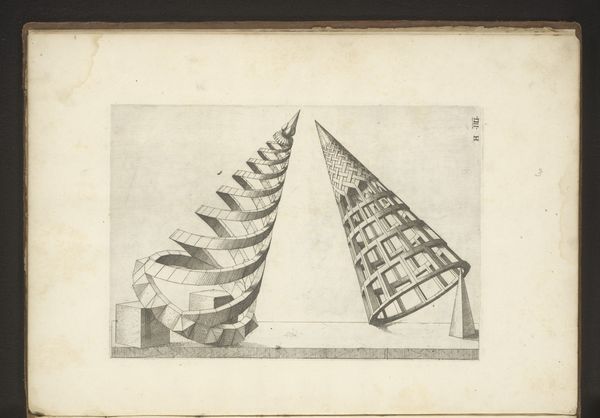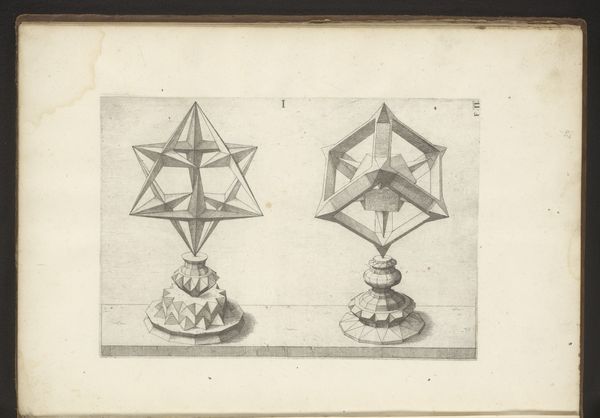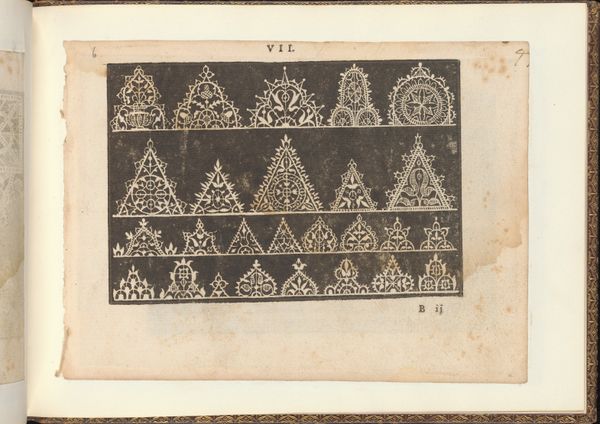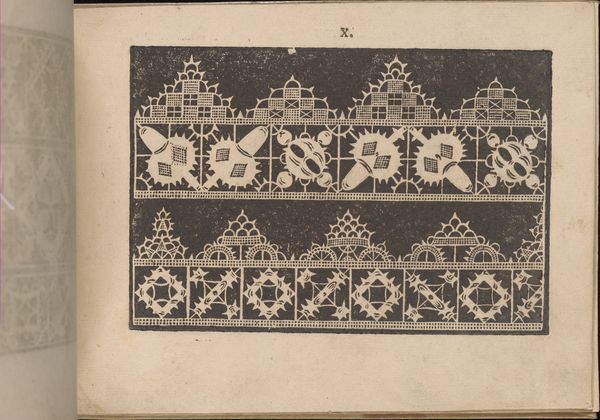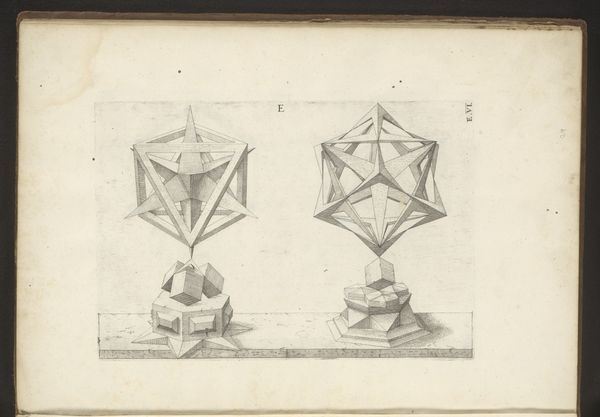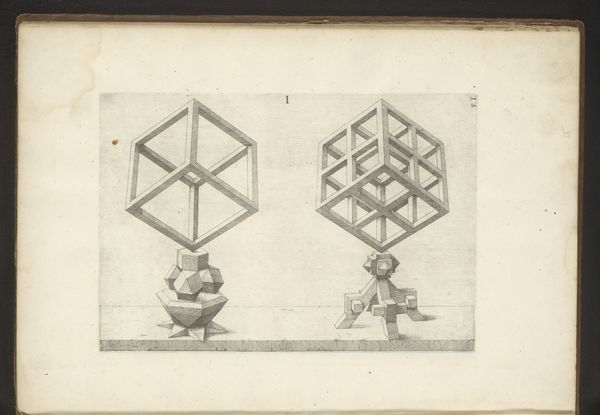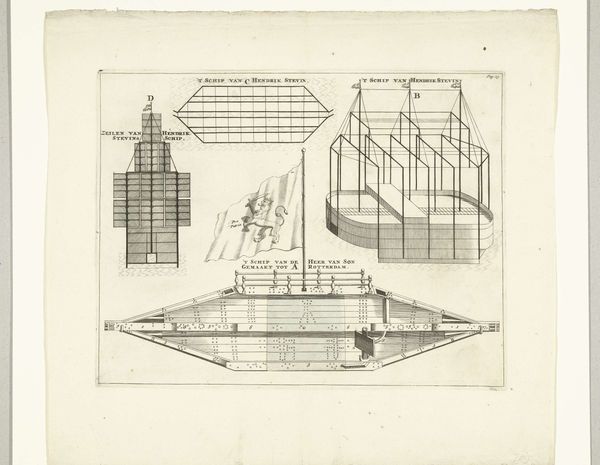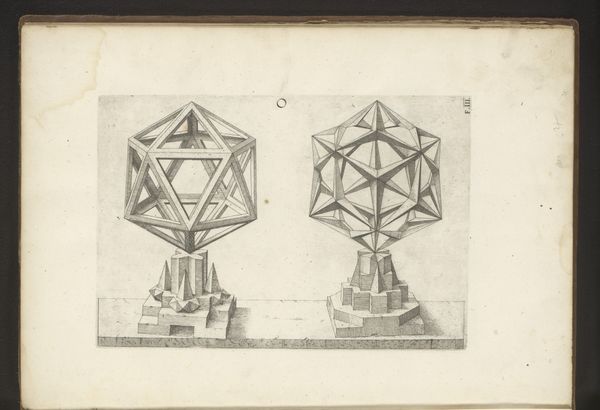
drawing, paper, ink, graphite, engraving
#
drawing
#
ink paper printed
#
perspective
#
paper
#
form
#
11_renaissance
#
ink
#
geometric
#
line
#
graphite
#
engraving
Dimensions: height 260 mm, width 172 mm
Copyright: Rijks Museum: Open Domain
These two polyhedra with a cone as a starting point, were etched by Jost Amman sometime in the late 16th century. These weren't traditional art materials like paint or marble, but a metal plate and acid, used to create an image that could be reproduced many times over. Take a close look: the image presents two variations on a cone, built from stacked geometric elements. The one to the left is constructed of solid cubes, while the right-hand cone has an open, architectural quality. Amman was a prolific printmaker, who made his living in the publishing industry. The image, rendered with exacting detail, speaks to the burgeoning culture of engineering and design during the Renaissance. It's a demonstration of technical skill, yes, but also a clever exploration of form. Considering Amman’s broader practice helps us to see how this precise print challenged hierarchies of knowledge and skill during its time, and even today.
Comments
No comments
Be the first to comment and join the conversation on the ultimate creative platform.
